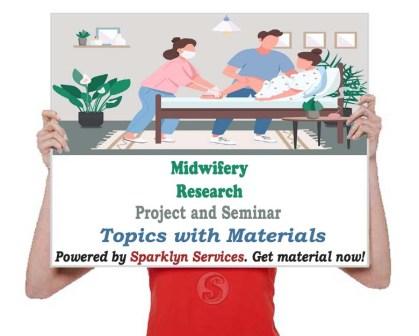1.1 Introduction
Menopause is defined as a permanent cessation of menses that is confirmed after 12 consecutive months of amenorrhea (Davis et al., 2015; Baber et al., 2016). It is divided into natural menopause that occurs spontaneously and induced menopause, which occurs as a consequence of ovarian failure due to medical causes such as chemotherapy and radiation or removal of both ovaries (Davis et al., 2015; Baber et al., 2016). Menopause is a natural important transition in women’s life. Having adequate knowledge and perception about menopause at a young age is critical for women to cope better with its associated consequences and improve their well-being.
As a prelude to other parts of this study, this chapter will discuss the background upon which this study was initiated, the statement of problems that led to this study, the Aim and Objectives of the study. Others are Significance of the study, Scope of work, Research hypothesis and questions, Limitation of the study and Definition of technical terms.
1.2 Background of Study
Menopause is permanent cessation of menstruation at the end of reproductive life due to loss of ovarian follicular activity. Menopause is a physiological event in the women life and is caused by aging of ovaries which leads to decline in the production of ovarian gonadotrophins, estrogen and progesterone. The deficiency of these hormones elicits various somatic, vasomotor, sexual and psychological symptoms that impair overall quality of life of women. Middle age is one of the turning point in one's life as it brings many changes. It roughly starts in the early forties, when for most of the people it is the best period in their life when their achievement is at the highest point. Midway between the challenges of adulthood and despair of old age, comes the compulsory change menopause in women. Middle age in women includes the gradual winding down of the reproductive system and ending of the child bearing years.
Menopause, the cessation of menstruation, is a psychosocial as well as a biological event. Attitudes, perceptions, and expectations are part of the psychosocial phenomena surrounding menopause. This study is based on perception and attitudes of Nigerian women towards menopause. Clinically, menopause is cessation of month cycles when menstruation flows no more. It is a transition period in women’s life. Igbo and Ako (2008) identified two types of menopause: premature and natural menopause. Premature menopause is as a result of surgical operation while natural menopause occurs sometimes from early 40’s to late 50’s. However, there are some women who started menopause after fifty years depending upon the time they started their menstrual cycle (Adekunle, Fawole & Okunlola, 2000). There are three stages of women’s menopause which has to do with the transition years where the production of reproduction hormones such as estrogens, progesterone and testosterone cease to function properly.
The duration of peri-menopause according to Cobb, (2004) can take up to ten years or above. The premenopausal marks the transition period to menopause and can last up to five years or more (Edwards, 1999). It is a period when the reproductive hormonal levels fluctuate by either rising or falling and the menstrual flow may be higher or heavier and irregular. This is the period when the attitude of women towards menopause can be ascertained through preparedness or not. This can be between ages 40-50 years (Wikipedia, 2009). The post-menopausal age starts from fifty-one years upward and it is a period when the ovaries no longer produce hormones or release egg (Reynolds & Obermeyer, 2001). A natural menopause is when the menstrual flow has ceased for a complete twelve months for a premature menopause where the woman has no uterus or fallopian tubes, the post menopause can be determined by a blood test which will reveal the high levels of follicles stimulating hormone (FSH) that are typical for post-menopausal women (Wikipedia, 2009).
Therefore, in Nigeria where the research was carried out, the activities that was conducted is to know the causes and its effect of menopause on women.
1.3 Statement of Problems
Investigation revealed that menopause is a difficult process. Women going through the menopause transition may experience a variety of symptoms ranging from vasomotor symptoms to sleep disturbance, mood disorders, loss of sexual desire and vaginal dryness. The symptoms can make it a considerable struggle for those already dealing with their hectic lives. As many as two-third of all women report vasomotor symptoms and over 85% report at least one menopausal symptom as transition through menopause. The study findings showed that 25% of women whose symptoms were severe, the resulting discomfort greatly diminish the quality of life (Randolph JF, et. al., 2004).
1.4 Aim and Objectives of Study
The aim of the study is to identify the causes and its effect of menopause on women. In achieving this aim, the following specific objectives were laid out as follows:
- To find out the causes of menopause among women
- To find out the effects of menopause among women
- To proffer solution to the above stated problems involved in the causes and its effect of menopause on women
1.5 Research Questions
The study came up with research questions so as to be able to ascertain the above stated objectives. The specific research questions for the study are stated below as follows:
- What are the causes of menopause among women?
- What are the effects of menopause among women?




